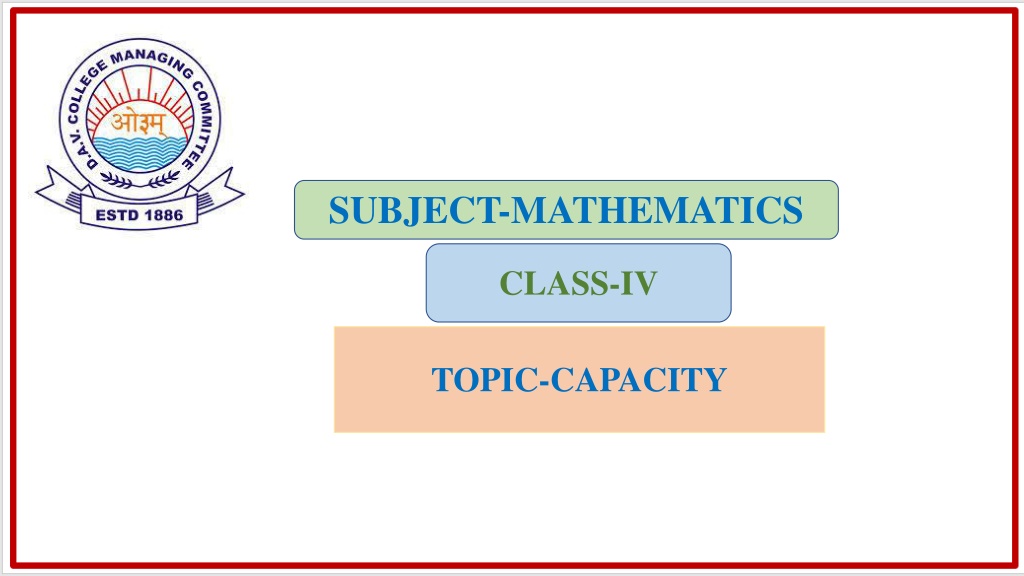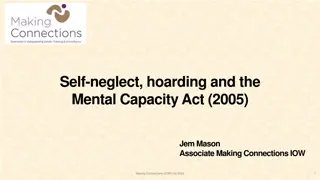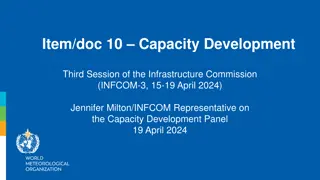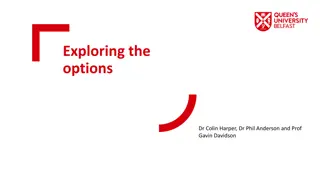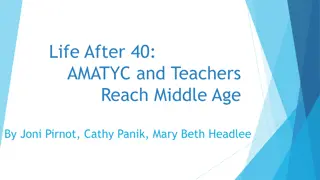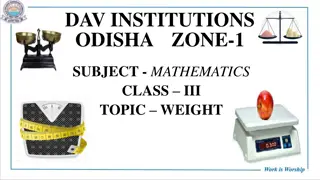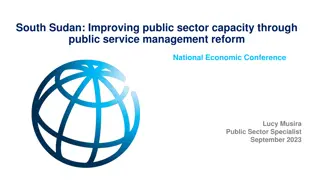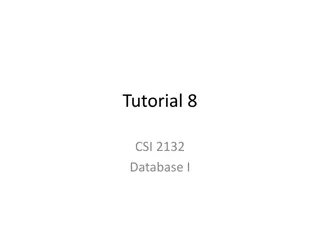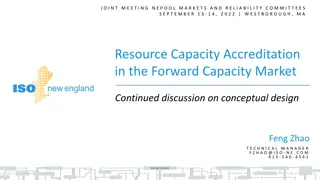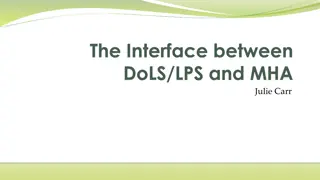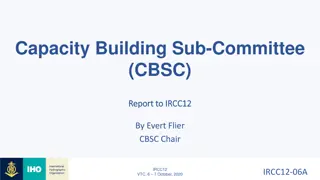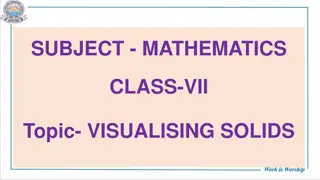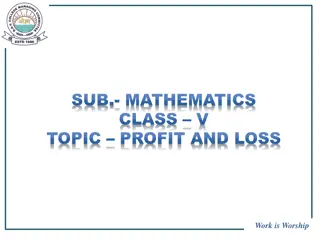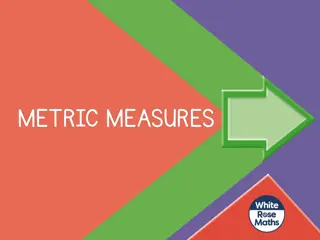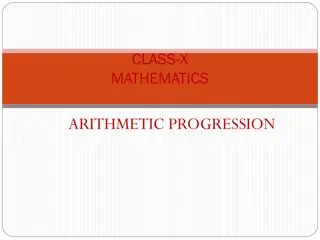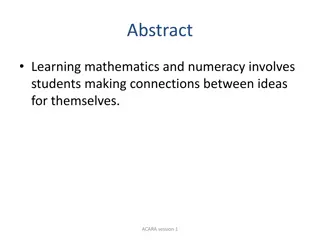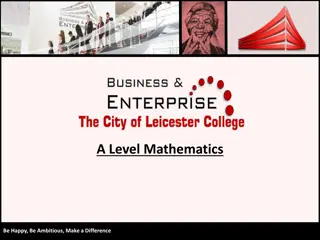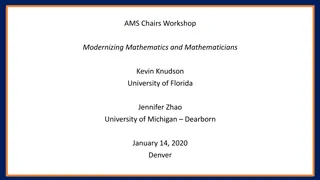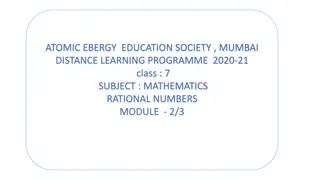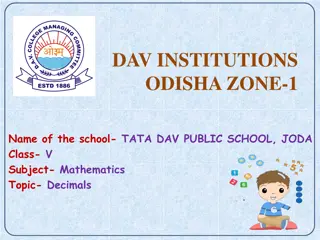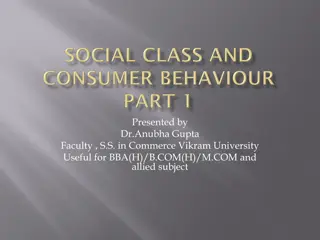Exploring Capacity in Mathematics - Class IV
Dive into the world of capacity in mathematics with Class IV students as they learn to compare containers, convert units, and apply their knowledge to real-life scenarios. Discover the concepts of litres, millilitres, and kilolitres while solving word problems and exploring the ability of containers to hold various substances.
Download Presentation

Please find below an Image/Link to download the presentation.
The content on the website is provided AS IS for your information and personal use only. It may not be sold, licensed, or shared on other websites without obtaining consent from the author. Download presentation by click this link. If you encounter any issues during the download, it is possible that the publisher has removed the file from their server.
E N D
Presentation Transcript
SUBJECT-MATHEMATICS CLASS-IV TOPIC-CAPACITY
CHAPTER TEXT BOOK LINK CHAPTER TEXT BOOK LINK CHAPTER-CAPACITY https://drive.google.com/file/d/1a5OehyvnERsPzuvEkFw8moMEjUc aevI7/view?usp=drivesdk
LEARNING OBJECTIVE LEARNING OBJECTIVE Students will be able to compare the capacity of different containers based on the containers attributes. Converting litres into Millilitres and vice versa. Recognising the different units of capacity such as litres, Millilitres and Killolitres. Understanding the conversion of units for solving word problems. Applying the concept of capacity in real life problems.
Introduction Introduction- -Capacity Capacity
Introduction Introduction Students ,look at these objects All these objects has an ability to contain some substance.
Now you can answer 1. Which of the following objects can hold more ? OR Glass Coconut
Now you can answer 2.Which of the following objects can hold more ? OR Bucket Bathtub
In No-1, the coconut can hold more than the glass. So the Coconut has more Capacity than the glass. In No-2, the bathtub can contain more water than the bucket. So the bathtub has more capacity than the bucket. What is capacity? The amount that a container can hold
Introduction Introduction - - capacity capacity CAPACITY IS MEASURED IN Millilitres and Litres! 1000ml=1 L That is one thousand tea spoon of water Equals to a whole jug which is 1 litre. Examples of capacity amounts: Cup of water=250 ml Standard milk bottle=1 litre Shower = 5 litres a minute Flushing the toilet=12 litre of water Bath =140 litres of water
Video on Capacity Video on Capacity- -An introduction introduction An https://youtu.be/QMpkm4dAB4w
Questions Questions 1. Which unit will you choose to express the following. A. Water in a water bottle. B. Ink in an ink pot. C. Oil in a can. 2. Fill in the blanks. A. The standard unit of capacity is _________. B. 1 Kilolitre=________litre. C. The biggest unit of capacity is__________.
Converting bigger unit into Converting bigger unit into smaller unit smaller unit. . Converting liters into Millilitres. Example-1 : Convert 9 litres into Millilitres Ans: 9 litres =9 X 1000 ml. ( 1 litre= 1000 Millilitres) = 9000 ml. Example-2: Convert 25 litres into Millilitres. Ans: 25 litres . =25 X 1000 ml =25000 ml When we are converting litres into Millilitres. We multiply the number of litres by 1000 to convert litres into Millilitres
Converting litres and Converting litres and Millilitres into Millilitres Millilitres into Millilitres Example-1: Convert 7L 750 ml Into Millilitres. Ans: 7L 750 ml =7000 ml 750 ml =(7000+750)ml =7750 ml. Example-2 Convert 52L 600ml into Millilitres. Ans:52L 600 ml =52000ml 600 ml =(52000+600)ml =52600 ml When we are Converting litres and Millilitres into Millilitres.convert the number of litres into Millilitres and add to it the number of Millilitres.
QUESTIONS 1.Convert the following into Millilitres. a. 8 litres. b.325 liters. c. 2L 675ml d.543L 8706ml. 2. State true or false . a.150 L = 1500 ml (T/F) b.7L 25ml=7025ml (T/F) c.34L 6504ml= 40504 ml (T/F) 1 litre=1000 ml
Converting smaller unit into Converting smaller unit into bigger unit bigger unit Converting Millilitres into Litres Converting Millilitres into Litres Example-1 : convert 8000ml into litres. Ans:8000ml =8000 1000 litres =8 Litres. Example-2: Convert 53000 ml into litres Ans:53000ml =53000 1000 litres =53Litres. Q. how to convert? Ans. Divide the number of Millilitres by 1000 to convert the Millilitres into litres
Converting Millilitres into Converting Millilitres into Litres and Millilitres Litres and Millilitres. . Example-1: convert 5678 Millilitres into litres Q. How to convert? Ans: -Split 5678 ml into 5000ml and 678ml - Divide 5000ml by 1000ml and convert this into litres. =5678ml =5000ml+678ml =5000 1000 L + 678 ml =5L 678ml
Questions Questions 1. Convert the following into litres and Millilitres. a.5000 ml. b. 123000 ml. c. 5670 ml. d. 91776 ml. 2. Compare using <,> and = a.5678ml______5789ml. b.3420ml______3L 400ml. c. 5630ml______4L 1630ml. The standard unit of capacity is litre. The biggest unit of capacity is Killolitre. 1 Killolitre= 1000 litres.
Addition of capacity By Addition of capacity By regrouping regrouping. . Example1: Add 63L 473ml and 35L 275 ml. Ans: L. ml 63 472 + 35 275 98L. 747 ml Procedure: First add Millilitres with Millilitres.if result is more than thousand,then that thousand place will go to Litre column.Add litres to find the sum.
subtraction of capacity By subtraction of capacity By regrouping regrouping Example-1: Find the difference between 29L 635ml and 23L 824ml. Ans: L ml L. ml 28 28 1635 29 635 - 23 824 - 23 824 5L 791 ml Here we can not Subtract 824 ml from 635 ml. Letus borrow 1 litre from the litre column.
Questions Questions 1. Add the following a. 12L 78ml and 39L 857ml b. 40L 6ml,83L 62ml and 33L 231ml. 2.Find the difference. a. 7L 364ml and 4L 274ml b.257L 750ml and 114L 895ml
Word problem Word problem Q1: Three milkmen are separately carrying 36L 250ml, 58L 396ml and 66L 324 ml of milk on their containers. Find out what is the total quantity of milk with them. Ans.Here, we will add all the quantities to get the total quantity. First milkman carrying = 36L 250ml Second milkman carrying= 58L 396ml + Third milkman carrying = 66L 324 ml Total Quantity= 160 L 970ml So 160L 970ml is the total quantity of milk with them.
Word problem Word problem 2. A can holds 15 l and 500 ml of milk. Out of it 8 l and 350 ml milk is consumed. How much milk is left in the can now? Solution: Quantity of milk in the can = 15 L 500 ml Quantity of milk consumed = 8 L 350 ml Quantity of milk left Thus = 15 L 500 ml 8 L 350 ml. 15 L 500 ml - 8 L 350 ml Therefore, quantity of milk left = 7 L 150 ml 7 L 150 ml
Questions Questions Word problem: 1.Raju mixes 2L 750ml of cow s milk in 1L 5ml of buffalow s milk. How much milk did Raju have in all? 2.Swastik s bucket holds 9L 350ml of water and Abhilasha s bucket holds 12L 875ml of water. Whose bucket holds more and how much? 3.A barrel can hold 29L 66ml of oil.14L 78ml oil was taken out. What is the remaining quantiy of oil in the barrel?
Capacity in art and craft Capacity in art and craft- - videos videos SELF-MADE VIDEO https://youtu.be/ylDD9xT1MZo
Summary Summary The standard unit of capacity is litre. 1 Litre= 1000ml The biggest unit of capacity is Killolitre. 1 Killolitre= 1000 litres. Multiply the number of litres by 1000 to convert litres into Millilitres. Divide the number of Millilitres by 1000 to convert the Millilitres into litres.
LEARNING LEARNING OUTCOMES OUTCOMES Students Can compare the capacity of different containers based on the containers attributes. Students can Convert litres into Millilitres and vice versa. Students can Recognise the different units of capacity such as litres, Millilitres and Killolitres. Students can solve word problems related to capacity. Sudents can solve real life problems related to capacity.
Mind map Mind map
